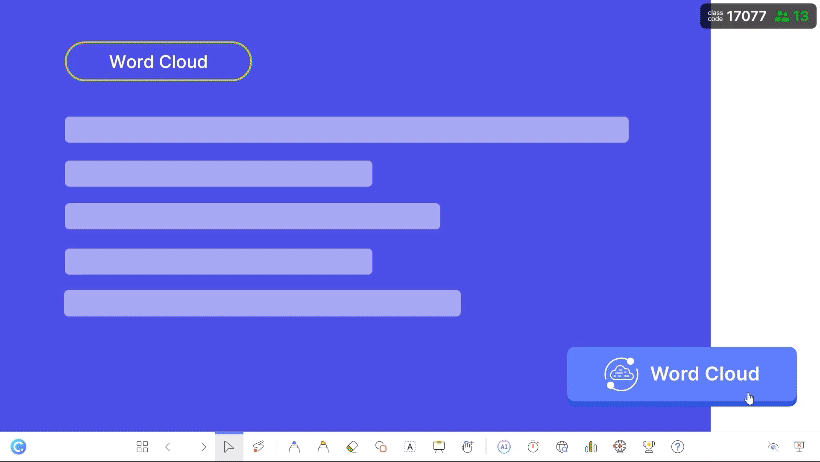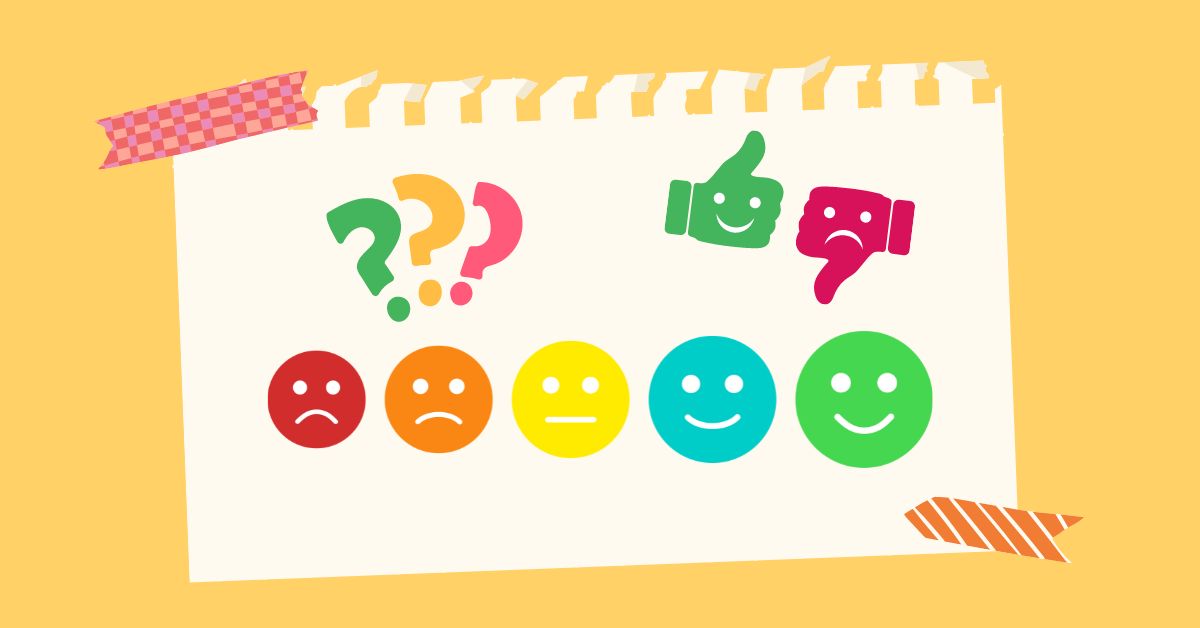Students today face a multitude of pressures – academic demands, social anxieties, and unpredictable personal challenges. These can significantly impact their emotional well-being and academic success.
The key to balancing between academic excellence and personal well-being lies in recognizing and nurturing their strengths and abilities. By cultivating self-awareness and harnessing their unique talents, students can develop resilience, confidence, and a sense of purpose. This, in turn, enables them to navigate challenges more effectively, maintain a healthy balance in their lives, and achieve both academic success and personal fulfillment.
Social and Emotional Learning (SEL) equips students with the skills necessary to navigate these challenges effectively. SEL check-in questions for students can be used as a powerful tool that educators can use to promote SEL and create a supportive learning environment for their students.
What are SEL Check-in Questions?
SEL stands for Social and Emotional Learning. It’s a framework that equips students with the critical skills to navigate the complexities of social interactions, manage their emotions effectively, and build healthy relationships. SEL offers strategies to build self-awareness, self-management, social awareness, relationship skills, and responsible decision-making.
On the other hand, SEL check-in questions are a powerful tool educators can use to unlock these essential skills. By posing thoughtful questions that touch on students’ emotional well-being, academic needs, and social experiences, teachers open a dialogue that creates a supportive classroom environment. With these questions, regular check-ins go beyond academics, creating a safe space for students to feel heard and understood. This sense of connection and belonging can have a profound impact on a student’s overall well-being and academic success.
Why Use SEL Check-in Questions?
Regular check-ins offer a multitude of benefits for both students and teachers. They create a safe space for students to express their emotions, leading to a more positive classroom climate. By checking in with students frequently, educators can identify students who might be struggling with social-emotional challenges and provide early intervention.
Check-ins also encourage students to reflect on their emotions, fostering increased self-awareness (a key element of SEL) and developing their ability to manage their feelings. Perhaps most importantly, check-ins build stronger relationships between students and teachers. When students feel heard and understood, they are more likely to be engaged and motivated in the classroom.
How Do I Use SEL Check-In Questions?
Implementing SEL check-in questions effectively in the classroom requires thoughtful planning and execution. Here’s a guide on how to maximize the impact of these questions:
1. Establish a Routine: Integrate SEL check-in activities for students into your daily or weekly classroom routine. Start each check-in session by setting a positive tone and emphasizing the importance of open and honest communication.
2. Create a Safe Space: Ensure that check-in sessions are conducted in a safe and confidential environment where students feel comfortable sharing their emotions and experiences. Respect student privacy at all times.
3. Actively Listen: Practice active listening during check-in sessions by paying attention to students’ verbal and nonverbal cues. Show empathy and compassion towards their responses, and follow up with probing questions to delve deeper into their experiences.
4. Provide Support: Use check-in sessions as an opportunity to provide support and guidance to students who may be struggling. Offer resources, strategies, or referrals to support services as needed, and follow up with students to ensure they receive the assistance they require.
5. Evaluate and Adapt: Regularly evaluate the effectiveness of your SEL check-in sessions and make adjustments as needed based on student feedback and outcomes. Flexibility and responsiveness are essential for ensuring that check-ins meet the evolving needs of your students.
Learn how to efficiently implement the SEL framework in the classroom with these practical strategies. Discover how to encourage personal growth and development early on in parallel with their academic journey.
60 SEL Check-in Questions for Students
Explore 60 creative SEL check-in questions to spark conversation and build a positive classroom environment.
SEL Check-in Questions for Students to Ask in Class
When crafting check-in questions, it’s important to use open-ended questions that encourage students to elaborate beyond a simple “yes” or “no.” Active listening is also crucial. Pay attention to students’ body language and nonverbal cues, and follow up with questions to show you care about their responses.
There are several categories of check-in questions that can be used to address different aspects of student well-being:
Emotional & Mental Health Check-in Questions
These questions gauge students’ moods and emotional states. Here are some examples:
- On a scale of 1 to 10, how are you feeling today?
- What’s one word that describes your mood right now?
- What’s something positive that happened to you recently?
- Is there anything that’s been bothering you lately?
- Imagine your emotions are colors. What color represents how you’re feeling today? (Use a mood chart)
- If you could describe your mood with a song title, what would it be?
- How can I best support you today?
- Do you feel comfortable talking about how you’re feeling today?
- What would make you feel more comfortable and supported in class?
- Is there a specific emotion you’d like to learn more about managing? (e.g., anxiety, frustration)
- Think about a time you felt happy/excited. What was happening?
- What relaxation techniques do you find helpful?
- Would you like to share a personal goal you’re working towards?
- What small act of kindness can you do for yourself today?
- Who is someone you can rely on for support outside of school?

Academic Check-in Questions
These questions help you understand students’ academic needs and challenges. For instance:
- What part of today’s lesson did you find most difficult?
- Do you feel prepared for the upcoming test/quiz?
- Is there anything you’d like to review before we move on?
- What study strategies do you find most helpful?
- Do you feel comfortable asking for help when you need it?
- Is there a particular concept you’d like to spend more time on?
- What are you most looking forward to learning about today?
- How confident do you feel about completing the upcoming assignment?
- Are there any resources you need to be successful in this class?
- What are your learning goals for this week?
- Would you prefer individual or group work on the next project?
- How can I help you clarify any confusion you might have about the material?
- Do you have any suggestions for making the learning process more engaging for you?
- What are some of your strengths as a learner?
- How can you use technology to enhance your learning experience?
Social Check-in Questions
These questions focus on students’ social interactions and classroom experiences. You could ask:
- Did you have a chance to collaborate with your group today?
- Do you feel like you can connect with your classmates?
- Is there anyone you’d like to work with on the next project?
- How can we create a more inclusive and supportive classroom environment?
- Have you noticed anyone who seems to be feeling left out?
- How can we celebrate each other’s successes in class?
- Do you feel comfortable asking classmates for help?
- What are some ways we can build a stronger sense of community in this classroom?
- Is there anything we can do to improve communication and collaboration in class?
- How can I help you feel more connected to your classmates?
- Do you ever feel like you don’t belong in this class? Let’s talk about it.
- Who is someone in class you feel you can confide in?
- Is there a classmate you’d like to get to know better?
- What are some of your hobbies or interests you’d like to share with the class?
- How can we create opportunities for teamwork and collaboration in this class?
Strengths Check-In Questions
These questions help students identify and celebrate their strengths:
- What are you most proud of accomplishing this week?
- What are you good at helping others with?
- What learning style do you find most effective for you?
- What are your natural talents and abilities?
- How can you use your strengths to contribute to the class?
- Think about a time you overcame a challenge. What skills did you use?
- What are you passionate about learning more about? (Connect strengths to interests)
- Is there a leadership role you’d like to take on in a group project?
- How can we create opportunities for you to showcase your strengths in class?
- Can you think of a recent situation where you felt particularly confident in your abilities?
- Would you like to present your findings or lead a class discussion on a topic you’re interested in?
- What are some ways you can motivate yourself when facing academic challenges?
- How can you use your strengths to help others in the class succeed?
- Do you ever feel like your strengths aren’t being recognized? Let’s talk about it.
- What are your long-term goals? How can your strengths help you achieve them?
Pro Tips to Implement Effective Check-in Activities for Students
Check-ins don’t have to be limited to questions! Here are some creative activities to engage students:

👉 Mood Meters: Introduce visual tools like mood charts or traffic light systems. Students can use them to non-verbally express their feelings at the beginning of class. Consider creating mood meters that are specific to your classroom environment. For example, you could conduct a word cloud activity where students can submit emojis to represent their moods regarding a certain topic, allowing students to indicate which activity they are most excited about or apprehensive about.
Another alternative is to use tools like ClassPoint that allow you to drag and drop objects on your presentation slides. Simply create a mood chart with emojis and a table for student names. Students can then drag their chosen emoji to reflect their mood, creating a fun learning environment.

👉 Quick Writes: Provide journaling prompts related to emotions, challenges, or goals for students to reflect on and express themselves in writing. Journaling prompts can be a springboard for deeper discussions. For instance, after a challenging lesson, you could prompt students to write about what they found difficult and how they might approach the topic differently next time.
Use ClassPoint’s interactive quiz feature, like the image upload and slide drawing quiz types, and discuss their responses together with the class afterward. This allows students to showcase their answers in a more engaging and imaginative way, and in turn, boosts participation.

👉 Exit Tickets: Create exit tickets with check-in questions or prompts to gather feedback and assess students’ understanding of the day’s lesson. Exit tickets can also be used to gather student input on classroom activities and the overall learning environment. You could ask students what they enjoyed most about the lesson or what they would like to see more of in the classroom.
Live polls are a great way to get real-time responses. Tools like ClassPoint integrate seamlessly with PowerPoint, allowing you to create exit tickets directly within your slides.
Final Thoughts
By incorporating SEL check-in questions and activities into your 21st classroom routine, you can foster a supportive learning environment where students feel valued and heard. Regular check-ins not only benefit student well-being but also contribute to their academic success. We encourage educators to share their experiences and insights about implementing SEL practices and witness the positive impact they can have on their classrooms. Join us in embracing SEL and nurturing the next generation of resilient, empathetic learners.
